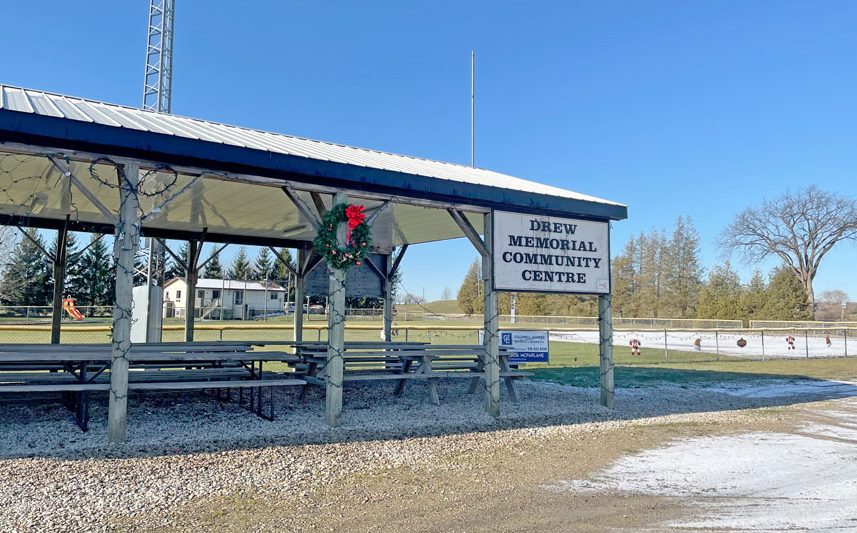MINTO – Council here is opposing removal of a section of the County of Wellington Official Plan that would prevent even minimal growth in existing rural settlements.
Like all municipalities across Ontario, the county is required by July of 2022 to update its official plan to comply with new provincial policy.
The process, known as a municipal comprehensive review, started in Wellington in the fall of 2020.
Triton Engineering senior planner Bill White updated council on the status of the review at the Dec. 7 meeting and recommended council forward several comments to the county:
- that Minto council oppose removal of section 6.4.7 from the county official plan so that existing rural settlements remain recognized as provided for in provincial policy and the growth plan and so that “minor infilling and rounding out” is permitted under specific conditions;
- that council reiterate the need for clear polices in the comprehensive review around urban boundary expansions up to 40 hectares and where there is no net increase in land supply to encourage flexibility, reduce boundary rigidity and to increase land development opportunity; and
- express support for a policy to allow urban areas to be expanded, outside the comprehensive review process, in situations where population and employment targets are exceeded, including re-allocation of surplus growth from municipalities not meeting targets.
In a report to council, White explained the main concerns for Minto are the implications of the new settlement hierarchy contained in proposed Official Plan Amendment (OPA) 119.
If approved, with the removal of section 6.4.7, OPA 119 would not allow limited infilling in small rural communities.
“Minto has numerous small rural areas with small housing and industrial clusters (Greenbush, Ayton Corners, Drew ballfield area and more),” White notes in the report.
“Currently a proposal to add limited residential housing in these areas could be considered by Minto council. If approved, OPA 119 would not allow limited infilling.”
Under OPA 119, the majority of growth in Minto would be directed to the town’s three “primary urban centres” of Clifford, Harriston and Palmerston.
The communities of Drew and Teviotdale, under the “hamlet” designation would be allowed “the lowest level of growth.”
However, White predicted that would have little impact on Minto as the two hamlets’ current boundaries “seem to mirror the current boundaries in the official plan.”
“Allowing minor infilling and rounding out of smaller settlements will help sustain the rural system, so long as private servicing is suitable and rural character is maintained. Staff recommend council request section 6.4.7 not be removed in OPA 119 as this would be more restrictive than provincial policy,” the report states.
“In addition to the urban areas, we have small communities where every once in a while, a little bit of infilling, or rounding-out development may be required and warranted and I think policy shouldn’t be so restrictive as to prevent that from happening,” White told council.
White suggested Minto officials should push the county to maintain some flexibility for boundary adjustments if needed to react to changing patterns.
“What happens if say, Centre Wellington or Erin, where the majority of growth is being focused, don’t meet their targets?” he asked.
“And what happens if, say, Minto or Wellington North, or some other areas start to get growth at a higher rate? And how can they reallocate that?
“And how can the county not back itself into a corner so that Minto or some other municipality doesn’t have to wait till the next comprehensive review to expand an urban area?”
Aside from specific concerns on small settlement areas, White said overall growth allocations for Minto under the county plan are in line with expectations.
“We believe the county has hit the mark on what growth is being allocated to Minto,” he stated.
“I would hope that Minto, in their comments and the mayor and county councillor (David) Anderson … continue to talk to the county about keeping this flexibility in, flexibility for reallocating growth and flexibility in rural settlement areas, I think it’s going to be important if the collective groups are going to meet the growth, which is very ambitious,” said White.
He noted Wellington County’s population is projected to go “from ninth in the greater Golden Horseshoe to third over the next 30 years.
“So we’re going to need all the tools available. We’re going to need flexibility,” he stated.
Councillor Ron Elliott asked White to clarify if discussions on the proposed amendment were still at a staff level.
“It hasn’t been to their county planning committee, but Official Plan Amendment 119, will be the first sort of full-blown political decision on this,” replied White.
Mayor George Bridge agreed with White the town should caution against being too restrictive.
“I worry about why the county wants to be more restrictive than the province,” said Bridge, given that provincial officials are talking about “local governments getting out of the way so we can get these things going and get this housing thing going and all that stuff.”
A motion to receive White’s report and direct comments to the county as recommended in the report was approved unopposed.




